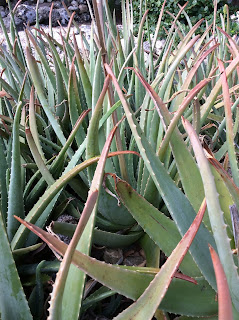Various species of Agave can be found growing throughout Barbados, both wild on the north and east coasts of the island, as well as in various gardens. The ones in these photos were taken as young plants from wild flower stalks to put in the garden, where they have flourished over the years, and at this time of year they all burst into flower.
The Agave flower stalks grow very quickly over a period of about six weeks, and will grow to a height of easily twelve feet. When the flowering period has ended, the flower stalk eventually falls over and the dried flowers fall to the ground where they grow into new plants. There is a delightful fragrance to the flowers, but since it’s near impossible to get close to them for a sniff, standing a little downwind makes all the difference.
Hummingbirds, bananaquits, bees and butterflies love the nectar produced by the Agave flowers - it’s the perfect time to watch as there is a steady stream of visitors to the flowers. The flower stalk itself is easily twelve inches around and withstands the high winds on the exposed east and north coasts of Barbados…a very hardy plant.










































